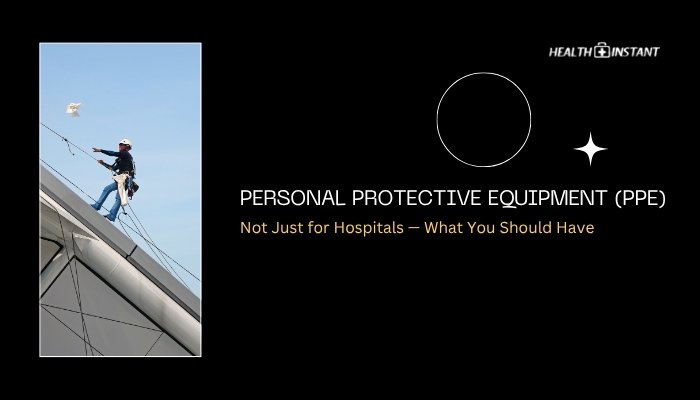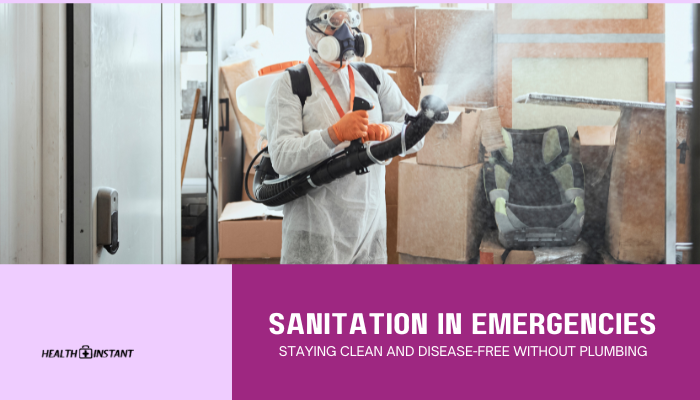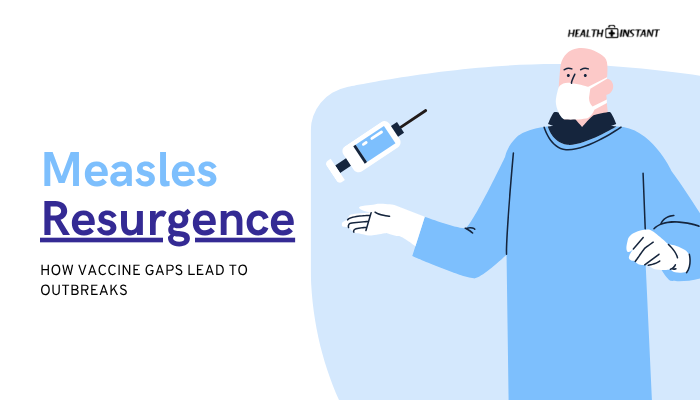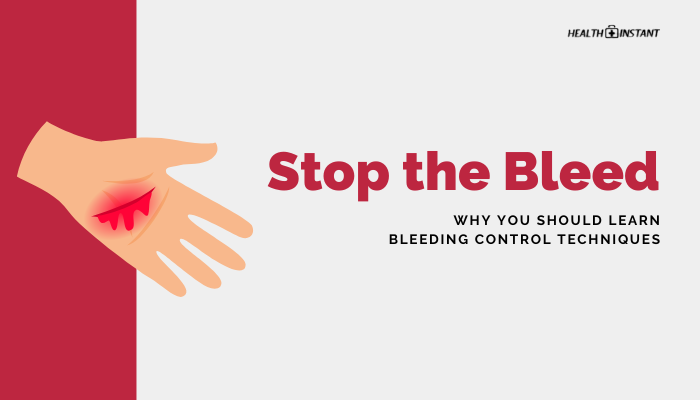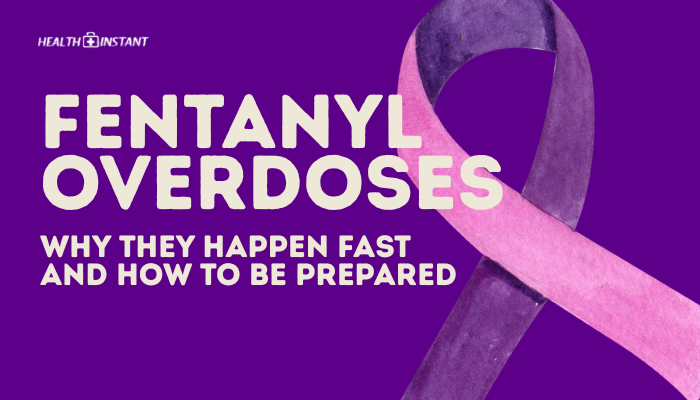Introduction
Personal Protective Equipment (PPE) has long been associated with hospitals, where healthcare workers wear gowns, masks, and gloves. However, PPE is not exclusive to medical settings. Various everyday situations can warrant simple protective gear—household cleaning tasks, carpentry, yard maintenance, and more.
Emergencies such as disease outbreaks or environmental hazards may also require specific equipment for personal safety. Ensuring you own a basic set of PPE and understand its uses will protect you and those around you.
This article explains essential PPE beyond hospitals, focusing on its purpose, types, and correct use. Each section covers different PPE categories (respiratory protection, hand protection, eye and face protection, full-body coverage, footwear, and hearing protection). We also address storage practices, quality standards, and best ways to teach family members or colleagues correct PPE usage.
By integrating PPE knowledge into your daily or occasional tasks, you can reduce injuries and illness risks. Simple, consistent habits in personal protection go a long way in creating a safer environment, regardless of whether you are dealing with household chores or a sudden large-scale emergency.
Defining PPE and Its Importance
Personal Protective Equipment (PPE) refers to wearable items designed to protect the body from hazards. These items can shield your respiratory system, skin, eyes, ears, or entire body. Traditionally, PPE is mandatory in work environments such as construction sites or chemical plants. Yet, many everyday scenarios also involve risks—like home renovation, chemical handling in cleaning, or viral outbreaks—where PPE becomes beneficial.
Core benefits of PPE:
- Minimizing injuries like cuts, abrasions, or punctures.
- Reducing exposure to harmful substances, including dust and airborne particles.
- Lessening the chance of infections by providing a physical barrier.
- Offering peace of mind when handling potentially hazardous tasks.
Proper PPE selection demands an awareness of the specific threats. For instance, you would not wear an N95 respirator for yard work unless you face dust or pollen. Similarly, latex gloves might not suit tasks involving strong solvents since they can degrade the glove material. By learning which PPE is best for each scenario, you can stay both safe and comfortable.
Common Situations Requiring PPE Beyond Healthcare
Though PPE often appears in hospital corridors, it plays a role in various other environments. Below are examples of everyday or occasional tasks where having the right protective equipment matters:
- House Cleaning and Maintenance
- Using strong chemical detergents or bleach.
- Scrubbing moldy surfaces or disinfecting bathrooms.
- Using strong chemical detergents or bleach.
- DIY and Home Improvement
- Painting walls with solvent-based paints.
- Sanding wood, generating sawdust.
- Using power tools that can fling debris.
- Painting walls with solvent-based paints.
- Gardening and Yard Work
- Handling soil, compost, or fertilizers.
- Pruning trees or bushes with thorny branches.
- Using pesticides to control insects or weeds.
- Handling soil, compost, or fertilizers.
- Working with Vehicles
- Changing engine oil or coolant.
- Welding or repairing exhaust systems in home garages.
- Changing engine oil or coolant.
- Outdoor Recreation
- Wood chopping for campfires.
- Off-road or trail activities where dust, splinters, or small debris can pose risks.
- Wood chopping for campfires.
- Community Preparedness
- Volunteering in disaster relief, like cleaning flood debris.
- Providing first aid or assisting in local emergencies.
- Volunteering in disaster relief, like cleaning flood debris.
In each of these scenarios, you risk encountering contaminants, sharp objects, intense noise, or irritants. Having simple protective gear can prevent injuries or prolonged health effects.
Types of PPE and Their Uses
Respiratory Protection
Protecting the lungs and airways is crucial, especially in dusty or chemical-laden atmospheres. Respiratory devices come in multiple forms:
- Face Masks (Surgical or Cloth)
- Basic barrier against droplets and mild airborne particles.
- Useful for short exposures, though limited in filtering fine dust or chemicals.
- Basic barrier against droplets and mild airborne particles.
- Respirators (N95, KN95, FFP2)
- Filter out smaller particles (at least 95% of airborne particulates).
- Good for tasks like sanding wood, handling mold, or protecting from airborne pathogens.
- Proper fit testing helps ensure minimal air leakage.
- Filter out smaller particles (at least 95% of airborne particulates).
- Half-Mask or Full-Face Respirators
- Equipped with replaceable cartridges for chemicals or particulates.
- Highly protective in environments with hazardous fumes, paint vapors, or pesticide sprays.
- Equipped with replaceable cartridges for chemicals or particulates.
When selecting a respiratory device, consider the hazard type. Particulate respirators (like N95) differ from chemical respirators that need activated charcoal cartridges. Following the manufacturer’s guidelines for replacement filters is also essential.
Hand and Arm Protection
Hands are frequently in contact with surfaces, tools, and substances that pose cut, abrasion, or chemical risks. The selection of glove material depends on the task:
- Latex Gloves
- Common in medical settings.
- Offer low chemical resistance but protect against biological contaminants.
- Common in medical settings.
- Nitrile Gloves
- Stronger resistance to punctures and chemicals compared to latex.
- Good for cleaning with harsh agents or handling light industrial tasks.
- Stronger resistance to punctures and chemicals compared to latex.
- Neoprene or PVC Gloves
- Enhanced chemical resistance (solvents, oils).
- Often used in heavy-duty cleaning, degreasing, or contact with strong acids.
- Enhanced chemical resistance (solvents, oils).
- Cut-Resistant Gloves
- Woven fibers such as Kevlar or steel mesh.
- Best for working with knives, power tools, or sharp materials.
- Woven fibers such as Kevlar or steel mesh.
Remember that glove thickness, fit, and length can differ. For instance, full-arm-length gloves come in handy when submerging arms in solutions or handling large volumes of fluid.
Eye and Face Protection
Eyes are sensitive to dust, chemical splashes, or flying debris. Face injuries can also occur if sparks or projectiles strike the nose or mouth area.
- Safety Glasses
- Wraparound designs with side shields.
- Ideal for light tasks generating dust or small particles.
- Wraparound designs with side shields.
- Goggles
- Form a tighter seal around the eyes.
- Useful for environments with liquid splashes or intense dust.
- Form a tighter seal around the eyes.
- Face Shields
- Transparent visor covering the face from forehead to chin.
- Often worn alongside safety glasses, especially for grinding metal or using chainsaws.
- Transparent visor covering the face from forehead to chin.
- Welding Helmets
- Essential if you perform arc welding or cutting with high-intensity sparks.
- Protect the eyes from UV radiation that can cause severe eye damage.
- Essential if you perform arc welding or cutting with high-intensity sparks.
Full-Body and Clothing Protection
In moderate to high-risk tasks, normal clothing might not suffice. Specialized coverings help contain contaminants and prevent them from reaching your skin or regular clothing.
- Aprons
- Basic barrier for spills or splashes.
- Typically made of plastic or rubber for chemical tasks, or cotton for lighter duties like painting.
- Basic barrier for spills or splashes.
- Coveralls
- One-piece garments covering arms, legs, and torso.
- Commonly used for gardening or dusty tasks like attic cleanouts.
- One-piece garments covering arms, legs, and torso.
- Disposable Suits
- Lightweight and breathable but protect from particles or sprays.
- Handy for mold remediation, asbestos removal, or intense paint tasks.
- Lightweight and breathable but protect from particles or sprays.
- Fire-Resistant Clothing
- Worn when dealing with flammable situations or welding tasks.
- Treated fabric that withstands sparks or moderate heat.
- Worn when dealing with flammable situations or welding tasks.
Protective Footwear
Feet face crushing hazards, sharp debris, slippery floors, or chemical splashes. Various safety footwear designs cater to different levels of risk:
- Steel-Toe Boots
- Reinforced toe caps to protect from heavy objects.
- Common in construction, workshop settings.
- Reinforced toe caps to protect from heavy objects.
- Rubber Boots
- Chemical-resistant and waterproof.
- Helpful for cleaning up flooded areas or using acidic or caustic liquids.
- Chemical-resistant and waterproof.
- Slip-Resistant Shoes
- Specialized soles to reduce falls on wet or oily surfaces.
- Useful in kitchens or mild industrial environments.
- Specialized soles to reduce falls on wet or oily surfaces.
Proper fit is crucial. Ill-fitting shoes can cause blisters and hamper mobility, negating some of the footwear’s protective value.
Hearing Protection
Loud noises can gradually damage hearing. High decibel levels can come from drilling, leaf blowing, or consistent machine operation.
- Earplugs
- Disposable foam or rubber inserts placed into the ear canal.
- Provide immediate noise reduction; quick and portable.
- Disposable foam or rubber inserts placed into the ear canal.
- Earmuffs
- Cover the entire outer ear with cushioned cups.
- Offer consistent attenuation, easy to remove and put on.
- Cover the entire outer ear with cushioned cups.
- Noise-Cancelling Headsets
- Electronic components to filter out harmful noise frequencies.
- Popular with individuals requiring clearer speech or situational awareness.
- Electronic components to filter out harmful noise frequencies.
Choosing the Right Materials and Quality Standards
When buying PPE, focusing on recognized standards is vital. International or regional certifications confirm that products meet safety benchmarks. For instance, an N95 respirator in the United States meets NIOSH criteria to filter 95% of airborne particles. In Europe, equivalent categories might carry CE markings under EN standards, such as FFP2 or FFP3 for masks.
Quality considerations:
- Check labeling: Look for specifications (e.g., “Nitrile Gloves, Chemical Resistant EN374” or “Mask meets NIOSH N95 standard”).
- Examine durability: Thicker gloves or sturdy fabrics last longer, especially for repeated tasks.
- Look for disclaimers or instructions: These often clarify which chemicals or hazards the product can handle.
Purchasing from reputable brands or distributors reduces counterfeit risks. Online marketplaces sometimes sell knockoff PPE, so verifying authenticity matters.
Proper Use and Maintenance of PPE
Wearing PPE incorrectly negates its protective function. Simple mistakes, such as not fully securing a respirator strap or reusing disposable gloves, can introduce avoidable risks.
Safe Donning and Doffing Practices
- Plan Ahead
- Lay out necessary items (gloves, mask, goggles).
- Remove jewelry or devices that can puncture gloves or create fit issues.
- Lay out necessary items (gloves, mask, goggles).
- Wear Items in the Correct Order
- For instance, put on coveralls first, then mask or respirator, then goggles, and gloves last if your tasks involve multiple hazards.
- For instance, put on coveralls first, then mask or respirator, then goggles, and gloves last if your tasks involve multiple hazards.
- Check the Fit
- Ensure masks form a snug seal over the nose and mouth.
- Adjust goggle straps to eliminate gaps where debris can enter.
- Ensure masks form a snug seal over the nose and mouth.
- Remove Items with Care
- Contaminants can reside on PPE’s exterior, so avoid touching these surfaces during removal.
- Turn gloves inside out while discarding them, then wash hands promptly.
- Contaminants can reside on PPE’s exterior, so avoid touching these surfaces during removal.
Storage and Disposal
- Storage: Keep PPE in sealed plastic bags or clean, dry cabinets to avoid dust or moisture damage. Avoid extreme temperatures that might degrade rubber or plastics.
- Cleaning: Reusable gear (e.g., face shields, goggles) should be cleaned with mild disinfectants after each use.
- Disposal: Single-use products like latex gloves or disposable masks should go in sealed trash bags, especially if contaminated with chemicals or biological materials.
Regularly inspect items for tears or flaws. Respirator cartridges have recommended change intervals. Gaskets on protective eyewear can weaken over time, leading to fit issues.
PPE for Household Tasks: Practical Examples
Below is a summary of common household chores and recommended PPE:
| Household Task | Potential Hazards | Suggested PPE |
| Cleaning with bleach | Chemical fumes, splash to eyes/skin | Nitrile gloves, protective eyewear, disposable apron |
| Painting walls (oil-based) | Vapor inhalation, paint splashes | Respirator (organic vapor cartridge), goggles, old clothes |
| Mowing the lawn | Debris thrown by blades, dust, pollen | Safety glasses or goggles, thick shoes/boots, earplugs |
| Handling pesticides | Skin irritation, inhaling toxic substances | Nitrile gloves, half-mask respirator, long-sleeve coveralls |
| Heavy yard pruning | Thorns, splinters, minor cuts | Cut-resistant or thick work gloves, safety glasses, boots |
| Drilling walls | Fine dust, flying debris | N95 respirator, safety glasses, possibly earmuffs |
These suggestions are not exhaustive. Always read the safety instructions on chemicals or tools to see recommended protective gear.
PPE in Community Preparedness and Emergencies
Crises such as pandemics, hurricanes, or wildfires highlight the broader utility of PPE. Medical-grade masks and gloves became familiar during a global health event, but communities also learned the importance of eye protection or coveralls when dealing with contaminated debris.
Key aspects of community-level PPE usage:
- Volunteers assisting in relief: Removing debris, distributing food, or cleaning flooded areas.
- Crowded Shelters: Masks or respirators help slow airborne disease spread.
- Hazardous Environmental Conditions: Wildfire smoke and ash require respiratory protection.
Local governments often store PPE as part of emergency kits. Households can mirror this practice by retaining a small reserve of N95 respirators, goggles, and disposable gloves. In large-scale emergencies, supply chains might strain, so personal stockpiles—kept responsibly—help fill immediate needs.
Creating a Basic PPE Kit at Home and Work
Constructing a basic kit requires balancing cost, storage space, and potential hazards you might face. Start simple, then expand if you engage in frequent or specialized tasks. Here is a step-by-step approach:
- Identify Risks
- Home tasks: Are you a gardener, DIY enthusiast, or do you use strong chemicals?
- Work tasks: Do you handle building materials, use loud machines, or interface with possible biological hazards?
- Home tasks: Are you a gardener, DIY enthusiast, or do you use strong chemicals?
- Essential Items
- Respiratory: A small pack of N95 or KN95 masks.
- Hands: Nitrile gloves in various sizes for the household.
- Eyes: At least one pair of safety glasses.
- Basic Body Cover: Simple disposable coveralls or sturdy apron.
- Footwear: Ensure you have at least one pair of closed-toe shoes or boots that can handle heavier tasks.
- Respiratory: A small pack of N95 or KN95 masks.
- Upgrade/Customize
- If you do chemical-based paint projects, add a half-mask respirator with correct cartridges.
- For noise-heavy tasks, purchase earmuffs or good earplugs.
- If you do wood or metal cutting often, consider cut-resistant gloves.
- If you do chemical-based paint projects, add a half-mask respirator with correct cartridges.
- Check Expiration and Condition
- Some PPE components degrade over time. Rubber items can crack, and respirator filters might have shelf lives. Replace or rotate them as needed.
- Some PPE components degrade over time. Rubber items can crack, and respirator filters might have shelf lives. Replace or rotate them as needed.
Keeping kits labeled and accessible ensures you can grab them quickly. Placing them in a garage cabinet or closet near your work area saves time when tasks arise.
Educating Family and Colleagues on PPE
Knowledge about correct PPE use matters as much as the equipment itself. If someone in your household or workplace is unaware of how to put on gloves or a mask, they can still be vulnerable to hazards. Consider these tips to share PPE knowledge:
- Demonstrations
- Show how to fit a mask properly.
- Practice removing gloves without touching the outside surface.
- Show how to fit a mask properly.
- Visual Aids
- Post simple posters or stickers near tool sheds, cleaning supply areas, or first aid stations.
- Label drawers or cabinets containing PPE with “Masks,” “Gloves,” “Eye Protection.”
- Post simple posters or stickers near tool sheds, cleaning supply areas, or first aid stations.
- Short Training Sessions
- In workplaces, hold brief practice sessions on correct donning/doffing methods.
- In the home, teach older children or teens about safe item handling.
- In workplaces, hold brief practice sessions on correct donning/doffing methods.
- Regular Reminders
- Encourage each other to wear gloves or goggles if you see tasks that might cause injuries or contact with irritants.
- Highlight successes: for example, “Wearing those earplugs prevented any ringing in your ears after mowing.”
- Encourage each other to wear gloves or goggles if you see tasks that might cause injuries or contact with irritants.
Building a culture of safety ensures PPE does not gather dust unused. It becomes second nature whenever tasks or hazards appear.
Challenges and Misconceptions
Despite the benefits of PPE, some common misunderstandings persist:
- Overconfidence
- Wearing PPE may lead individuals to ignore basic safety rules. For example, believing a face shield alone replaces caution with dangerous tools.
- PPE is a final line of defense, not a substitute for safe work practices.
- Wearing PPE may lead individuals to ignore basic safety rules. For example, believing a face shield alone replaces caution with dangerous tools.
- One-Size-Fits-All Assumption
- A single type of glove or mask rarely covers all tasks.
- Using the wrong equipment can be just as risky as using none.
- A single type of glove or mask rarely covers all tasks.
- All PPE is the Same
- Quality and certification vary. Low-grade items may fail quickly or provide minimal protection.
- Always confirm the product suits your hazard level.
- Quality and certification vary. Low-grade items may fail quickly or provide minimal protection.
- Expense vs. Value
- Some people see PPE as an unnecessary cost. However, hospital bills or long-term health effects from injuries cost far more.
- Starting with a modest kit can reduce bigger medical or repair expenses in the long run.
- Some people see PPE as an unnecessary cost. However, hospital bills or long-term health effects from injuries cost far more.
- Misuse of Reusables and Disposables
- Disposable masks or gloves are meant for single use, especially after contact with harmful substances.
- Reusing them compromises their integrity and cleanliness.
- Disposable masks or gloves are meant for single use, especially after contact with harmful substances.
Tackling these misconceptions means reinforcing the purpose of PPE: controlling immediate risks while acknowledging equipment limitations. Education, consistent usage, and ongoing checks remain key.
Conclusion
Personal Protective Equipment extends well beyond a hospital ward. From everyday chores in your home to assisting community efforts after a disaster, PPE stands as an essential safeguard against chemical splashes, sharp debris, dust, and other hazards.
By choosing suitable items—masks, respirators, gloves, eyewear, body coverings, footwear, and hearing protection—you significantly reduce risks of injury or exposure. Additionally, correct usage, storage, and maintenance ensure the gear remains effective.
Purchasing a basic PPE kit and familiarizing yourself and your household with its correct application can be a practical investment. With informed habits, you transform potential dangers—like harsh cleaning agents or power tool mishaps—into manageable tasks.
Furthermore, broad awareness of PPE fosters readiness for bigger emergencies that demand rapid protective measures. Embracing PPE as part of everyday routines helps develop a safety mindset that can make all the difference when challenges arise, whether small-scale household tasks or unexpected community-level crises.
References
- Centers for Disease Control and Prevention. Guidance for the selection and use of personal protective equipment (PPE) in healthcare settings. Atlanta (GA); 2020.
- Occupational Safety and Health Administration. Personal protective equipment standards. Washington (DC); 2019.
- National Institute for Occupational Safety and Health. Hierarchy of controls. Atlanta (GA); 2021.
- European Committee for Standardization. EN standards for personal protective equipment. Brussels; 2020.
- World Health Organization. Rational use of personal protective equipment for coronavirus disease (COVID-19). Geneva; 2020.
- US Food and Drug Administration. N95 respirators and surgical masks (face masks). Silver Spring (MD); 2020.
- Canadian Centre for Occupational Health and Safety. OSH answers: PPE. Hamilton (ON); 2021.
- Health and Safety Executive (UK). A short guide to the Personal Protective Equipment at Work Regulations. London; 2021.
- PPE Guidelines for Common Tasks. Ministry of Manpower (Singapore); 2021.
- CDC. Eye safety: emergency response and disaster site worker. Atlanta (GA); 2019.
- National Safety Council. Hearing protection basics. Itasca (IL); 2020.
- American Conference of Governmental Industrial Hygienists. 2021 TLVs and BEIs: Threshold limit values for chemical substances and physical agents. Cincinnati (OH); 2021.

